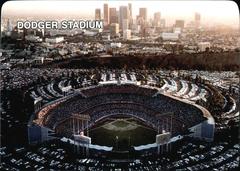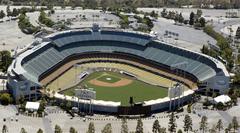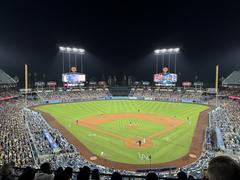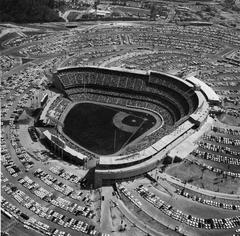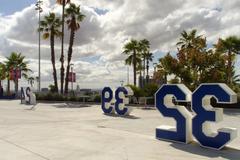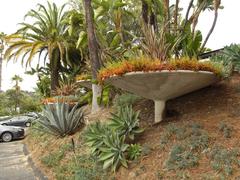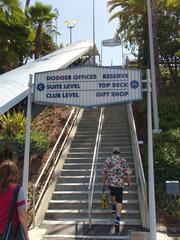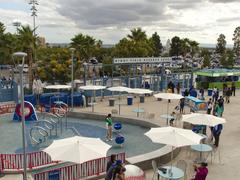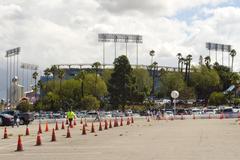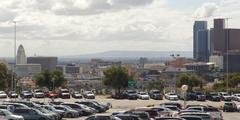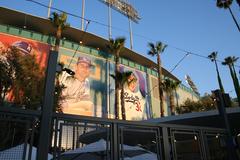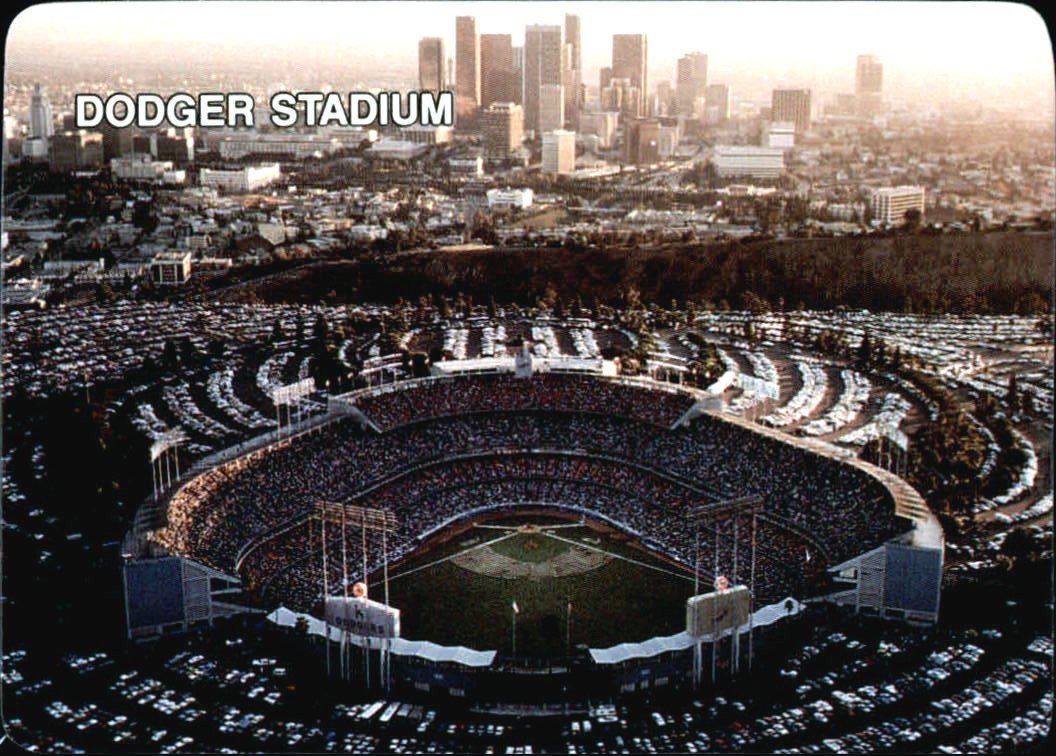
Dodger Stadium Visiting Hours, Tickets, and Los Angeles Historical Sites Guide
Date: 14/06/2025
Introduction to Dodger Stadium and Its Significance
Dodger Stadium is more than just a ballpark; it stands as one of Los Angeles’ most enduring and significant landmarks. Since opening in 1962, it has played a pivotal role in the city’s sports, cultural, and social history. As the third-oldest Major League Baseball (MLB) stadium and the largest by seating capacity, Dodger Stadium is woven into the fabric of Los Angeles and its diverse communities. Its construction marked a transformative period in the city’s development, symbolizing both progress and the complexities of urban change (dodgerblue.com; pbssocal.org).
Built atop Chavez Ravine—a site with a rich and turbulent past—Dodger Stadium’s creation involved significant engineering feats and the displacement of long-established communities. Architect Emil Praeger’s innovative, cantilevered design continues to offer fans unobstructed views and a classic mid-century modern aesthetic (pbssocal.org).
Today, Dodger Stadium hosts world-class baseball, concerts, cultural celebrations, and robust community outreach programs. Its proximity to other Los Angeles historical sites, such as Elysian Park and Olvera Street, enhances its appeal for visitors seeking a deep and multifaceted LA experience (MLB.com; Secret Los Angeles; LAist).
Table of Contents
- Origins and Early Development
- Construction and Architectural Innovation
- Historical Milestones and Memorable Moments
- Visiting Dodger Stadium: Hours, Tickets & Tips
- Nearby Attractions and Los Angeles Historical Sites
- Renovations and Modernization
- Cultural and Social Significance
- Legacy and Enduring Appeal
- Visuals and Media
- Frequently Asked Questions (FAQ)
- Conclusion and Recommendations
Origins and Early Development
The story of Dodger Stadium is intertwined with the evolution of both Major League Baseball and Los Angeles. When the Brooklyn Dodgers, under Walter O’Malley, moved west in 1957, they sought a new home. Their relocation to Los Angeles marked a turning point for the sport and the city itself (dodgerblue.com).
Chavez Ravine, the chosen site, had been home to a vibrant Mexican American community. The community was displaced in the 1950s following a failed public housing project and subsequent negotiations to bring the Dodgers to LA (pbssocal.org). This period remains a poignant chapter in the city’s history, symbolizing both civic ambition and the cost of urban progress (LAist).
Construction and Architectural Innovation
Construction began on September 19, 1959, requiring massive earth-moving efforts and advanced engineering. Eight million cubic yards of soil were moved to create the stadium’s sunken-bowl design. Architect Emil Praeger’s cantilevered grandstands eliminated obstructive columns, providing every fan with a clear view of the field (pbssocal.org).
When Dodger Stadium opened on April 10, 1962, it boasted a capacity of over 52,000 and was the most modern ballpark of its era (elysianparkstadium.com). The construction cost approximately $23 million, a significant investment in private and public partnership (pbssocal.org).
Historical Milestones and Memorable Moments
Dodger Stadium has been the backdrop for some of baseball’s most iconic moments, including World Series victories in 1963, 1965, 1981, 1988, 2020, and 2024. Legendary performances by Sandy Koufax, Fernando Valenzuela, and others have cemented its place in baseball lore (historicbaseball.com).
The stadium has also hosted the Beatles’ 1966 concert, visits from Pope John Paul II, games outside of baseball, and will be a venue for the 2028 Summer Olympics (elysianparkstadium.com).
Visiting Dodger Stadium: Hours, Tickets & Tips
Hours and Ticketing
- Games: Gates typically open 1.5–2 hours before first pitch; parking lots open 2.5 hours prior.
- Tours: Guided tours are available most days from 10:00 AM to 4:00 PM, with last tours starting earlier on game days (MLB.com).
- Team Store: Open daily, 10:00 AM–6:00 PM; game days until end of play.
Tickets are exclusively digital, available via the MLB Ballpark app. Options range from single-game tickets to season memberships. Special events, group packages, and premium seating are also offered. Advance booking is recommended, especially for high-demand games and tours.
Getting There
- Address: 1000 Vin Scully Avenue, Los Angeles, CA
- Driving: Easily accessed from I-5, 110, and 101 freeways.
- Parking: Free for tours on non-game days; fees apply on game days. Pre-purchase is advised.
- Public Transit: Metro buses and the Dodger Stadium Express shuttle serve the stadium on game days (Metro.net).
- Rideshare: Uber pick-up/drop-off at Lot 1 (Gate B).
Accessibility
- Wheelchair seating, ramps, elevators, and accessible parking are available.
- Complimentary wheelchair rentals and assisted listening devices are offered.
- Service animals are welcome per ADA guidelines.
Nearby Attractions and Los Angeles Historical Sites
- Elysian Park: Offers hiking, picnicking, and scenic city views.
- Olvera Street: Explore LA’s Mexican heritage and historic marketplace.
- Downtown LA: Home to Walt Disney Concert Hall, museums, and vibrant nightlife.
- Griffith Observatory & LA State Historic Park: Popular cultural and recreational sites nearby.
Renovations and Modernization
Dodger Stadium has undergone extensive renovations, particularly since 2020, to preserve its mid-century character while adding modern amenities, expanded concourses, upgraded seating, and technology enhancements (historicbaseball.com; itinerantfan.com).
Cultural and Social Significance
The stadium is a symbol of Los Angeles’ diversity and resilience. From its roots in Chavez Ravine to its role as a hub for major civic events—including annual LGBTQ+ Pride Night and community outreach through the Dodgers Foundation—the stadium reflects the city’s evolving identity (LA Pride; MLB Dodgers Community).
Legacy and Enduring Appeal
Dodger Stadium continues to draw millions of fans each year, fostering intergenerational traditions and civic pride. Its integration of classic design with contemporary features ensures its place as a “timeless gem” in both baseball and Los Angeles history (historicbaseball.com; pbssocal.org).
Visuals and Media
Before your visit, explore virtual tours, photo galleries, and interactive maps on the Dodgers’ official site. Suggested images include panoramic stadium views, the historic scoreboard, and event highlights—accompanied by alt text for accessibility.
Frequently Asked Questions (FAQ)
Q: What are Dodger Stadium’s visiting hours?
A: Game day gates open 1.5–2 hours before first pitch; tours run 10:00 AM–4:00 PM. Confirm on the official tour page.
Q: Where can I buy tickets?
A: Tickets are sold via the MLB Ballpark app or at the box office.
Q: Is the stadium accessible?
A: Yes. Wheelchair seating, ramps, elevators, and accessible restrooms are available.
Q: Are guided tours offered?
A: Yes. Choose from standard, Clubhouse, and specialty tours. Book in advance.
Q: Are there family-friendly amenities?
A: Yes, including a kids’ area, playground, and interactive centerfield attractions.
Conclusion and Recommendations
Dodger Stadium is not only a sports venue but a living monument to Los Angeles’ history, diversity, and community spirit. Its blend of classic architecture, modern amenities, and cultural programming offers something for everyone—whether you’re a lifelong fan, history buff, or first-time visitor. Plan your visit by securing digital tickets, exploring guided tours, and discovering nearby LA attractions. Download the MLB Ballpark and Audiala apps for real-time updates, and follow the Dodgers on social media for the latest events and promotions.
References and Further Reading
- dodgerblue.com
- pbssocal.org
- historicbaseball.com
- elysianparkstadium.com
- MLB.com
- LAist
- Secret Los Angeles
- Westside Los Angeles
- LA Pride
- MLB Dodgers Community
- Metro.net
